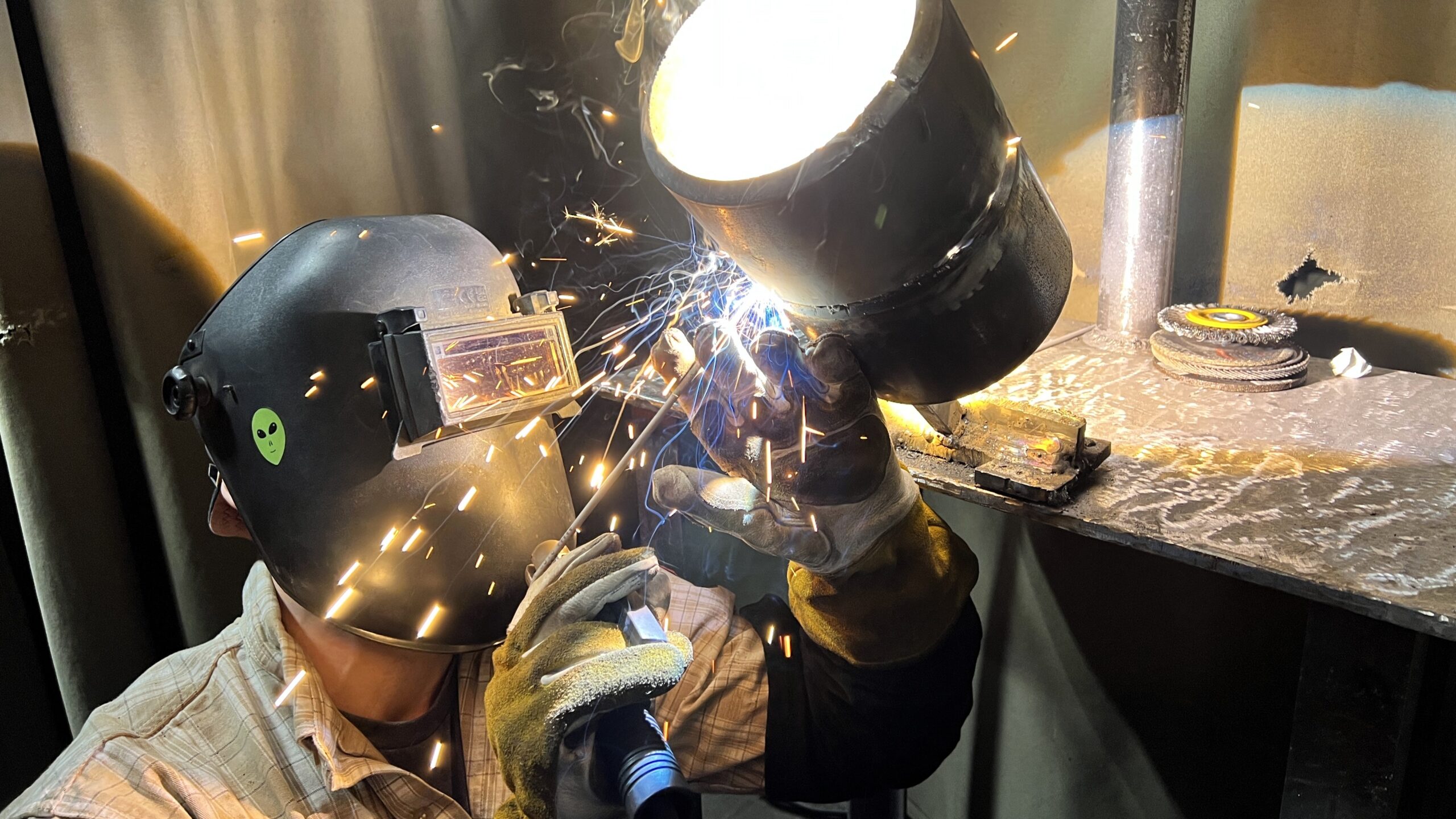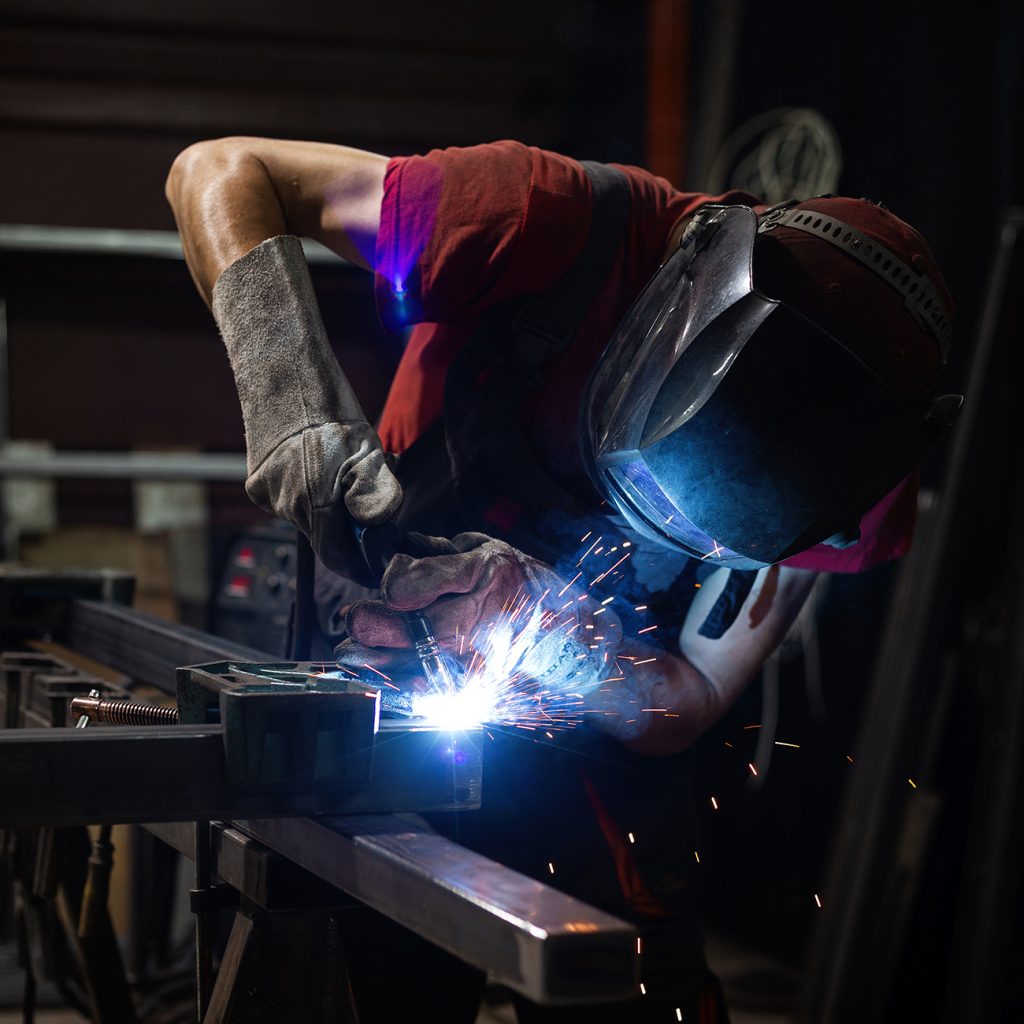Usual Welding Repair Work Issues and Just How to Address Them Successfully
Welding repair services commonly experience a series of concerns that can jeopardize the integrity of the final product. Common troubles include insufficient penetration, porosity, and misalignment, to name a few. Each flaw offers one-of-a-kind difficulties that require particular strategies for resolution. Understanding these concerns is essential for welders aiming to boost their skills and results. This conversation will explore these common welding repair work problems and efficient techniques to resolve them.
Poor Infiltration
Inadequate infiltration happens when the weld metal falls short to completely fuse with the base material, causing weak joints and possible structural failures. This problem frequently comes from not enough warm input, wrong electrode angle, or inappropriate welding rate. Welders may encounter poor penetration because of a miscalculation of the essential specifications for a particular product density or kind. Additionally, contamination on the base material's surface can hinder effective bonding, aggravating the issue. To address insufficient penetration, welders need to ensure appropriate setups on their equipment and maintain a tidy work surface. Regular examination of welds is advised to identify any type of shortages early, enabling timely modifications and the prevention of endangered structural stability in bonded assemblies.
Porosity
Porosity is a typical defect in bonded joints that materializes as small gas bubbles entraped within the weld metal. This defect can compromise the integrity of the weld, leading to decreased strength and possible failing under stress. Montana Mobile Welding and Repair Welding. Porosity typically occurs from contamination, wetness, or improper welding techniques, which allow gases to run away into the liquified weld swimming pool. To address porosity, welders ought to assure correct surface area prep work, keep a clean working setting, and use appropriate welding parameters. In addition, selecting the appropriate filler product and protecting gas can reduce gas entrapment. Regular evaluation and testing of welds can assist identify porosity early, assuring timely rehabilitative actions are taken, thus preserving the quality and integrity of the welded framework
Misalignment
Misalignment in welding can arise from numerous factors, including inappropriate setup and thermal growth. Recognizing the origin is vital for effective resolution. Numerous correction techniques are available to realign elements and guarantee architectural integrity.
Reasons of Imbalance
Welding imbalance usually originates from a selection of underlying concerns that can jeopardize structural honesty. One primary reason is inappropriate fit-up of parts before welding, which can bring about spaces and unequal surfaces. Variations in thermal expansion throughout the welding process can also lead to distortion, specifically if the materials being joined have various coefficients of growth. Furthermore, insufficient fixturing and clamping may fall short to hold components securely in position, bring about movement during welding. Inadequately kept equipment, consisting of welding machines and devices, might present disparities in the weld bead, further adding to misalignment. Operator error, stemming from inadequate training or experience, can likewise play a considerable duty in creating misaligned welds.

Improvement Techniques Readily Available
Attending to misalignment properly requires a mix of restorative strategies customized to the specific problems available. One usual approach is using components or jigs to hold parts in the correct placement throughout welding, guaranteeing constant positioning. In addition, preheating the products can help in reducing distortion and improve fit-up. For considerable misalignment, mechanical adjustment strategies, such as making use of hydraulic jacks or clamps, can be utilized to fix the position before welding. Post-weld heat treatment might also be necessary to soothe stress and anxieties brought on by misalignment. Ultimately, careful assessment and modification throughout the setup phase can stop misalignment problems from ending up being significant problems, promoting a smoother welding process and enhancing total architectural honesty.
Distortion
Distortion is a typical difficulty in welding that can occur from various aspects, consisting of uneven heating and cooling. Understanding the sources of distortion is essential for implementing efficient prevention techniques. Addressing this concern not just enhances architectural stability but also improves the overall top quality of the weld.
Sources of Distortion
When based on the intense warm of welding, materials frequently go through adjustments that can cause distortion. This sensation mainly develops from thermal development and tightening during the welding process. As the weld area warms up, the product expands; upon cooling, it acquires, which can develop interior stress and anxieties. Furthermore, unequal home heating throughout a work surface can exacerbate these anxieties, leading to warping or flexing. The sort of product seam welding additionally plays a substantial function; metals with differing thermal conductivity and coefficients of development may respond differently, leading to uncertain distortions. Moreover, bad joint layout and inadequate fixturing can contribute to imbalance during welding, boosting the possibility of distortion. Recognizing these causes is important for reliable welding repair service and prevention techniques.
Avoidance Techniques
Effective avoidance strategies for distortion during welding concentrate on controlling heat input and making sure proper joint layout. Keeping a regular warmth input helps to decrease thermal development and contraction, which can cause distortion. Utilizing techniques such as pre-heating the workpiece can also decrease the temperature level slope, advertising uniform home heating. In addition, picking proper joint layouts, such as T-joints or lap joints, can enhance security and reduce anxiety concentrations. Implementing appropriate fixturing to secure the workpieces in place additionally aids in preserving placement throughout the welding procedure. Lastly, staggered welding series can disperse warm a lot more uniformly, avoiding localized distortion. By using these strategies, welders can substantially decrease the chance of distortion and enhance the general high quality of their welds.
Splitting
Breaking is a common concern experienced in welding repair services, typically resulting from various variables such as incorrect cooling rates, product selection, or inadequate joint prep work. The event of splits can greatly compromise the integrity of the weld, bring about potential failings during procedure. To resolve this concern, welders should first evaluate the origin, guaranteeing that materials work and suitably selected for the certain application. Furthermore, regulating the air conditioning price during the welding process is crucial; quick air conditioning can induce stress and anxiety and bring about breaking. Appropriate joint layout and prep work likewise contribute to lessening the threat. Implementing these approaches can enhance weld quality and sturdiness, inevitably reducing the chance of fracturing in completed weldments.
Insufficient Combination
A substantial problem in welding repair work is insufficient blend, which takes place when the weld steel does not adequately bond with the base material or previous weld passes - Montana Mobile Welding and Repair Belgrade Fabrication. This defect can result in weak points in the joint, potentially jeopardizing the honesty of the welded structure. Elements contributing to incomplete blend include insufficient warm input, inappropriate welding method, and contamination of the surfaces being joined. To resolve this concern properly, welders need to assure appropriate pre-weld cleaning and surface area preparation, as well as adjust their welding criteria to attain adequate penetration and fusion. Normal inspection during the welding procedure can also aid recognize insufficient blend early, permitting for prompt corrective measures to enhance the general quality of the weld
Overheating
While welding repairs can enhance structural integrity, overheating presents a significant obstacle that can bring about product deterioration. Excessive warmth throughout welding can alter the mechanical buildings of metals, causing reduced strength, raised brittleness, and bending. This sensation is specifically essential in high-stress applications where architectural integrity is paramount. Determining getting too hot can include aesthetic examinations for staining or distortion, as well as checking temperature level during the welding process. To mitigate the threats related to overheating, welders ought to see this website utilize ideal strategies, such as regulating warmth input, adjusting traveling rate, and utilizing appropriate filler products. Additionally, carrying out pre- and post-weld warm therapies can help bring back material homes and boost the total top quality of the repair, guaranteeing lasting efficiency and security.
Frequently Asked Inquiries
What Are the Common Indications of a Welding Defect?

Exactly How Can I Check My Welds for Quality?
To check welds for high filler wire quality, one can make use of visual evaluations, ultrasonic screening, and radiographic techniques. Each method assures architectural integrity, recognizes flaws, and confirms adherence to defined standards, ultimately boosting the dependability of the welded joints.
What Security Safety Measures Should I Take While Welding?
When welding, one ought to focus on security by putting on suitable personal protective devices, guaranteeing correct ventilation, protecting combustible materials away, keeping a clean office, and recognizing environments to avoid injuries and crashes.
Can I Fix a Weld Without Renovating the Entire Joint?
Repairing a weld without redesigning the whole joint is possible, depending on the damages (Belgrade). Strategies such as grinding, adding filler product, or utilizing a welding process can successfully address certain imperfections while preserving the bordering framework
What Equipment Are Crucial for Efficient Welding Services?
Necessary tools for efficient welding repair work include a welding device, wire brush, mill, safety equipment, clamps, and filler materials. Each device plays an important role in ensuring high quality and safety during the repair procedure. Porosity commonly occurs from contamination, moisture, or improper welding methods, which allow gases to escape into the liquified weld swimming pool. Poorly maintained tools, consisting of welding equipments and tools, may present inconsistencies in the weld grain, more contributing to imbalance. When subjected to the intense heat of welding, materials often go through adjustments that can lead to distortion. Cracking is an usual concern encountered in welding repair services, frequently resulting from various elements such as improper cooling rates, product selection, or poor joint prep work. A substantial issue in welding repair services is incomplete fusion, which takes place when the weld metal does not sufficiently bond with the base product or previous weld passes.